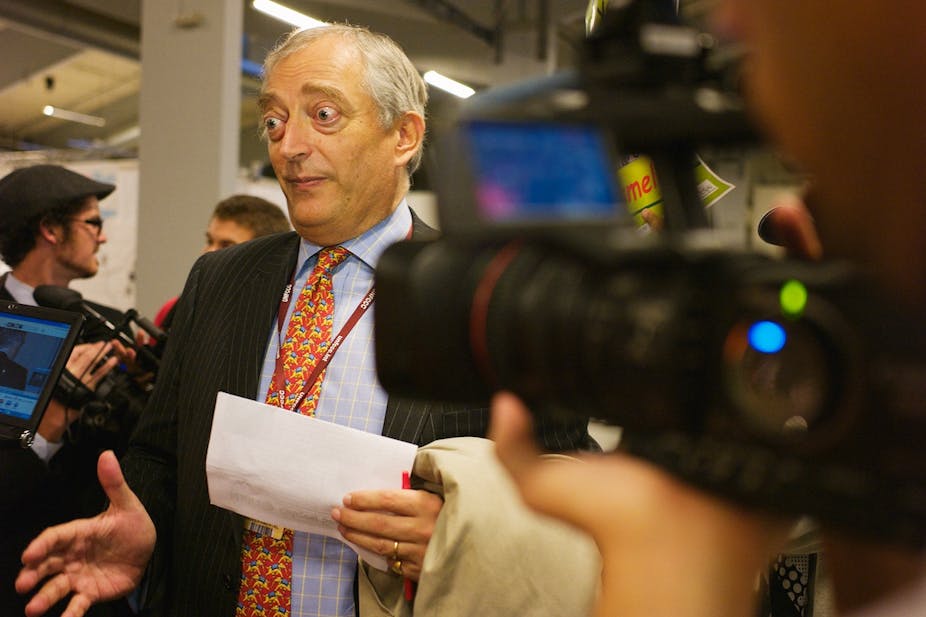When announcing the media enquiry in September this year, Senator Conroy committed to regulatory processes that support “a healthy and independent media that is able to fulfill its essential democratic purpose, and to operate in the public interest”.
The News of The World phone hacking scandal in the UK seems to underlie the timing of this enquiry. But the media’s betrayal of the public interest in Australia is nowhere more evident than in its coverage of anthropogenic climate change.
Earlier this year, Malcolm Turnbull advocated climate scientists as the experts on the topic, and those to whom we should be listening. Turnbull’s advice came as a breath of fresh air amidst all the politicking.
The reporting of his statements offers a revealing case in point: the media focussed on the controversy arising from a former leader of the opposition being apparently offside with his current leader. Focus rapidly shifted back to Tony Abbott’s response.
Since Kevin Rudd made his fateful about-turn on the “moral challenge of our time”, mainstream media coverage of climate change has offered plenty of distractions from what’s actually happening to the planet.
We’ve seen Tony Abbott’s beat-up of the government’s carbon price as a “great big new tax”; the “Juliar” fracas in which the PM was demonised for policy adjustments made in negotiating minority government; the celebrification of climate sceptics devoid of relevant specialist expertise; and endless media cogitation on the “debate”. It’s as if the global consensus of the world’s leading climate scientists might suddenly collapse in the face of opposition from sceptics or the resources sector.
It wasn’t always like this. Media academic Anabela Carvalho studied newspaper coverage of climate change in the United Kingdom in the 1980s and 1990s. She identified a shift in the representation of scientists from “the uncontested central actors and exclusive definers of climate change up to the end of 1988” to voices on the sidelines as Margaret Thatcher appropriated “the risks of climate change to promote nuclear energy and dismantle the coal industry”.
Climate change was once discussed as “a tractable and potentially solvable scientific problem, to be dealt with by credible agents”. But media representation of climate change shifted from certainty to controversy. Political and economic issues came to the fore, marginalising environmental and social ones.
The effects of this shift are evident in Australia in recent public opinion polling by the Lowy Institute and others. There is declining preparedness to pay for action to reduce carbon emissions and a declining sense of urgency regarding the need for action.
The news media have not performed well here. Even the ABC, with its history of serious science reporting, has been unable to resist the titillating spectacle of climate sceptics seeking to scuttle the authority of climate scientists.
Monash media academics, Phillip Chubb and Chris Nash, recently published a research paper on the Friends of the ABC website. It notes the imbalance in the ABC’s coverage of Australian visits by leading climate sceptic, Lord Monckton on the one hand, and renowned climate scientist, Dr James Hansen, on the other.
Identifying a disparity of 47 to five in Monckton’s favour in ABC media appearances, Chubb and Nash also note that Hansen’s visit failed to rate a single mention on ABC TV. Monckton, on the other hand, “received saturation coverage (twice a day) by ABC media and was always treated as an authoritative source until the MediaWatch report at the end of his tour”.
Environmental journalists, who provide specialist commentary on the more complex aspects of the topic, are unlikely to see their work on the front page. Political reporters tend to foreground manoeuvring and games playing, offering an “insider” political perspective which precludes discussion of the environmental, legal and social ramifications that many communities are wrestling with.
There is confusion regarding the effects of reducing carbon emissions, including the expectation that cuts will lower global temperatures rather than contributing to slowing temperature increase. The confusion reflects the need for the amplification and diversification of the public conversation.
Back in 2006, the UK’s Stern Review noted that delaying the transition to a low emissions economy would increase the costs. It’s a straightforward premise based on economic modelling, but the basic message – pay now or pay a lot more later - has so far failed to gain traction in media coverage.
A common knee-jerk response to public ignorance on the topic is to blame the government for not “selling” its carbon price effectively. However, the mainstream media, who host the public conversation, also have a responsibility.
They should cut through the stunts and controversy and offer information and broad-based discussion and analysis. They must elucidate the diverse implications for local government, public health, coastal real estate, the insurance industry, food security, rural communities, indigenous flora and fauna, and our Pacific island neighbours, to name but a few.
On the historic day when the carbon pricing legislation finally passed the House of Representatives, Australia’s print media stuck with the controversy framing. “Kissgate” (as La Trobe student Matt Ralston dubbed it) got front page coverage in The Age, The Australian and The Herald Sun. The PM’s body language, her place in the polls and Tony Abbot’s “blood oath” upstaged any discussion of what it might mean for the planet and future generations.
The current media enquiry is certainly timely here. It’s to be hoped that it comes up with some incentives, either carrot or stick, which will prompt the Australian press to reinvigorate the public conversation on climate change. We need more issues covered and a fairer representation in the voices heard.

